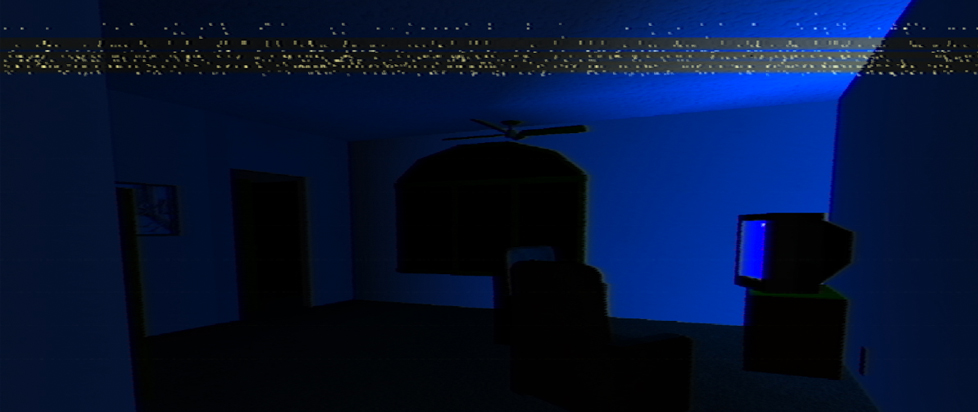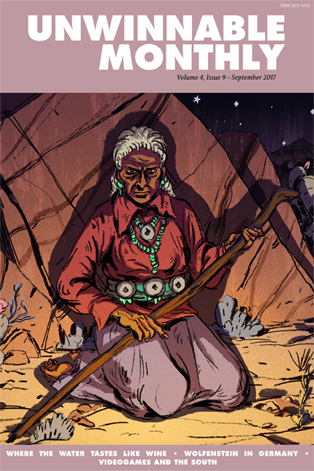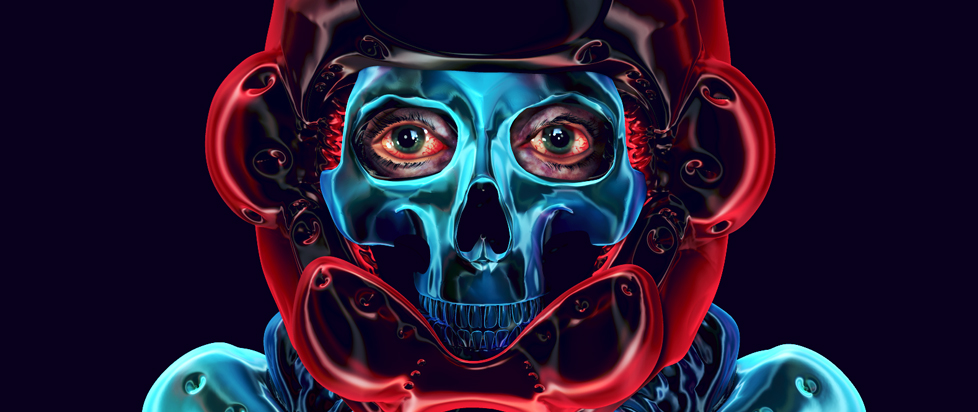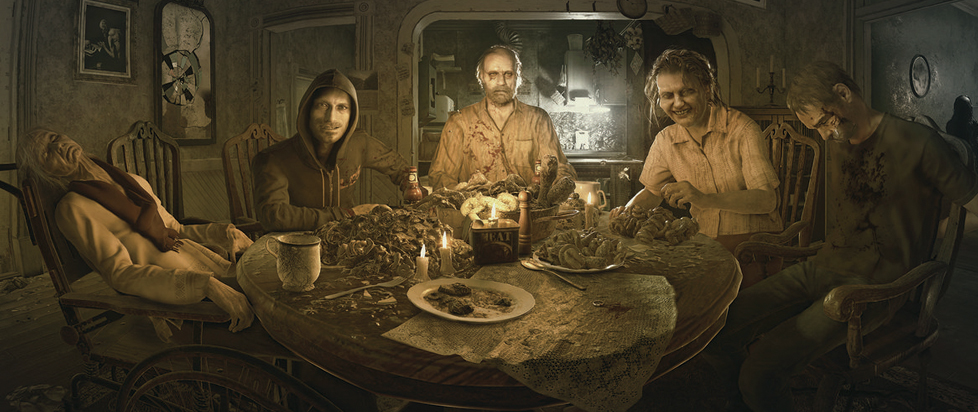
Checkpoint – Haunted Houses
 Corey Milne stands at the intersection of gaming and world history to see what he can see.
Corey Milne stands at the intersection of gaming and world history to see what he can see.
———
This column is a reprint from Unwinnable Monthly #95. If you like what you see, grab the magazine for less than ten dollars, or subscribe and get all future magazines for half price.
———
On the surface What Remains of Edith Finch is a game about a large family, centerd in and around their old home. Playing as a younger and still living relative, we explore this space so that we may learn about the lives lived and lost on this towering estate. What we find in place of a home though is a mausoleum, which is something Gavin Craig explores in some depth back in Issue 91. A cluttered, yet empty shrine to characters you can’t picture having ever shared the same space.
Each bedroom and a few other rooms present a series of vignettes that allows players to inhabit their occupant for the short time up to and including their death. The Finches tend to die young and the purpose of exploring this old house is in trying to understand a family curse. I have my favorites. I found the child with a swing set on a cliff hilarious for the sheer inevitability of the scenario. I enjoyed being a bored teen seeing a storm create patterns in the sky with debris from a garden party. The schlocky horror section, complete with a Vincent Price-like narrator was fun.
They all play differently and offer mechanical variation. In an interview with Rolling Stone, the game’s director Ian Dallas said, “For me, the rawest form of exploration in videogames is the first moment when you sit down with the game and you’re trying to figure out, ‘What do my buttons do? What can I do in this world? How does this world respond to my actions?’” In this respect, Edith Finch succeeds, but its overarching plot of curses and familial bonds is fluff. We never get to know these characters because there isn’t the time. Their pristine rooms need to constructed and preserved with the broadest brush strokes. The items they coveted playing the part of character. The gameplay slices are fun on their own but overall the experience seemed as empty as the house.
[pullquote]This isn’t empty space. That rumor-filled house has been watching you. It’s only when it’s too late do you realize you’ve been ensnared by a predator.[/pullquote]
An empty house doesn’t necessarily mean a lifeless house. Anatomy is another game about an abode. Created by Kitty Horrorshow, it’s a horror game exploring the relationship between a family and a home. There are no characters to speak to here, either, just some low polygonal furniture in each room. Like Edith, the player collects snippets of information, this time through cassette recordings rather than constructed memories. These tapes equate different rooms to different organs in the human body, ruminating on where these might be located. Is the bedroom its mind, for it is where we do our dreaming, or something more sinister, where our defenses are shorn away? This reinforces the link between the structure and those living inside of it, rightly making them a part of each other.
Anatomy deals with the house as a living construct, having taken in the lives of a family. What happens when that life leaves? Is a house expected to crumble and be forgotten, like the Finch’s towering manor? What if the house doesn’t want to forget? Are the shadows moving passed windows in a house, you’re pretty sure has, been empty for years a reenactment in search of meaning? Anatomy turns the familiar into something terrifying. You know it’s an empty house, so why then do I fear having to go into the basement? What if I turned a corner and there was somebody standing there? I know there isn’t. Probably.
In this way, the space becomes not just a point-to-point walk in a game, but a realm of possibility. You’ll learn the layout of the space quickly enough and it’ll become familiar in the way any average 2-bedroom house is. When you walk through the house again and items are in different places, it’s no big deal. Like losing your keys after having just put them down right here, I’m sure I just had them a moment ago! Then rooms begin to warp. The recordings become increasingly erratic and unintelligible. This isn’t empty space. That rumor-filled house has been watching you. It’s only when it’s too late do you realize you’ve been ensnared by a predator.
What remain of us after we’re gone? Edith Finch seems to point to the posters hung on the walls. Oft-read books sitting on shelves with broken spines. While we can discern what kind of books a person enjoyed, we can never know why they enjoyed them. Not without them being there to share that experience, even while the game screams this isn’t the case by presenting its immaculate reenactments.
This makes What Remains of Edith Finch feel insincere. That great old house is a shell filled with stuff for our amusement. It has no appetite for life.
———
Corey Milne is an Irish freelance writer who likes to poke at that strange intersection where games meet history. A roundup of his writing can be found at coreymilne.com. You can join his Rad-Lands motorcycle bandit gang on Twitter @Corey_Milne.




